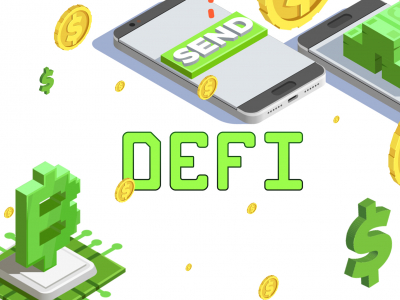Celebrity endorsements have brought bitcoin to the wider public’s attention but have not succeeded in explaining what it is and how it works in layman’s terms. Hence, CoinFox asks: is bitcoin actually popular?
By now a number of celebrities, such as American actor Ashton Kutcher, English singer-songwriter Imogen Heap, Virgin Group founder Richard Branson and former professional boxer Mike Tyson, have been vocal supporters of bitcoin keen to demonstrate its usefulness in the real world by their own example. World-renowned specialised magazines, such as The Economist, have featured prominently both bitcoin and blockchain, offering in-depth, though not very technical, analysis. Even The Simpsons mentioned the cryptocurrency.
And yet, bitcoin remains as cryptic as ever for the popular imagination, being portrayed every now and then on American television as something only a hacker would understand and only a criminal would use.
In 2014, the late-night talk show CONAN aired a short sketch featuring the character of so-called COO of Bitcoin who was to explain “just what bitcoin is and how it works.” The character of bitcoin’s COO Marcus Ortman had to answer three questions concerning the cryptocurrency: what it is, how it can be used and what it is not. After describing bitcoin as “a decentralised digital currency exchanged in the interactive metaverse,” “an open-source synergistic flow matrix facilitating e-transference of digital assets” and “a flat circle and everything we ever do or have ever done, we will do again,” Marcus unsuccessfully tried to vanish in a puff of smoke leaving both Conan and the audience as ignorant as before as to what bitcoin was.
The sketch featured on CONAN not necessarily mocked bitcoin’s tech nature, but rather the convoluted and highly specialised jargon bitcoiners use to describe the cryptocurrency. In the same year, the entertainment website CollegeHumor.com released another sketch, in which a group of writers were discussing the possibility of making a bitcoin video, the bottom line of the joke being the volatility of bitcoin’s “comedic value.”
Similarly, the online comics website The Nib published a cartoon entitled Give Me All Your Bitcoins in which an attempted mugging ended up as an instructional session on the specifics of bitcoin addresses and wallets.
So, in 2014 bitcoin’s popular image was that of a curiosity which was too complicated, too technical, volatile and obfuscated by mystical crypto-digital e-jargon to be understood. In other words, bitcoin was presented as “too cool for school.” 2015 showed little improvement in bitcoin’s pop image. Motherboard, for instance, referred to it as
…Thoroughly unsexy. It’s notorious for requiring explanation after explanation for a layman to understand it, and it’s more a plaything for technocratic libertarians than something you hand off after a rough and rowdy night.
The magazine also claimed that “Satanism and Bitcoin have a lot in common.” This quote comes from an interview Jordan Pearson conducted with Rob Konsdorf, the cryptocurrency consultant for the so-called Satanic Temple. When asked whether associating bitcoin with Satan could potentially harm the cryptocurrency’s public image, Konsdorf replied that
To try to dodge potentially incendiary topics for some PR is just totally against the entire point of Bitcoin; of censorship resistance. I don’t think there’s anything wrong with it. It’s something anyone can use that has the internet. People should think for themselves, and look into Satanism, as well. They shouldn’t dismiss it because their fire and brimstone pastor told them Satan is bad.
Unlike Motherboard, the iconic Playboy magazine saw bitcoin as a door to “sexy possibilities.” We also witnessed the release of the coming-of-age post hip hop generation comedy/drama Dope, which not only featured bitcoin as a prominent element of the plot but also allowed for tickets to be purchased with the cryptocurrency.
TV series offer one of the widest possible exposures bitcoin might receive. After the nerdy and rather dry explanation offered by The Good Wife’s characters way back in 2012, most recently another TV show centred around a strong female lead, namely CSI: Cyber released a bitcoin-themed episode. Bit by Bit involved a murder, a robbery of a laptop with US $500,000 worth of bitcoin and even two bitcoin bounty hunters. The episode also demystified bitcoin’s anonymity, as an FBI Cyber agent tracked the thief’s wallet and commented:
The biggest misconception about Bitcoins is that it’s anonymous, that’s why it’s the preferred currency in the deep web. It’s used to fund drug deals, hit men, human trafficking— but it’s not actually that anonymous.
Obscure, misunderstood, a curiosity, an instrument of crime and/or of empowerment, a favourite of techies, geeks, escorts and Satanists, sexy or not, bitcoin is here and it is revolutionary. It may not be the “magic internet money,” as reads one of the t-shirts sold by the newly-launched online store All Things Bitcoin, and to perceive it as such is to take away from the seriousness of its claim. That being said, bitcoin’s popular image is still too ‘serious’ and rather limited to its crypto aspects or to its possible illicit uses.
Diana Bogdan

















